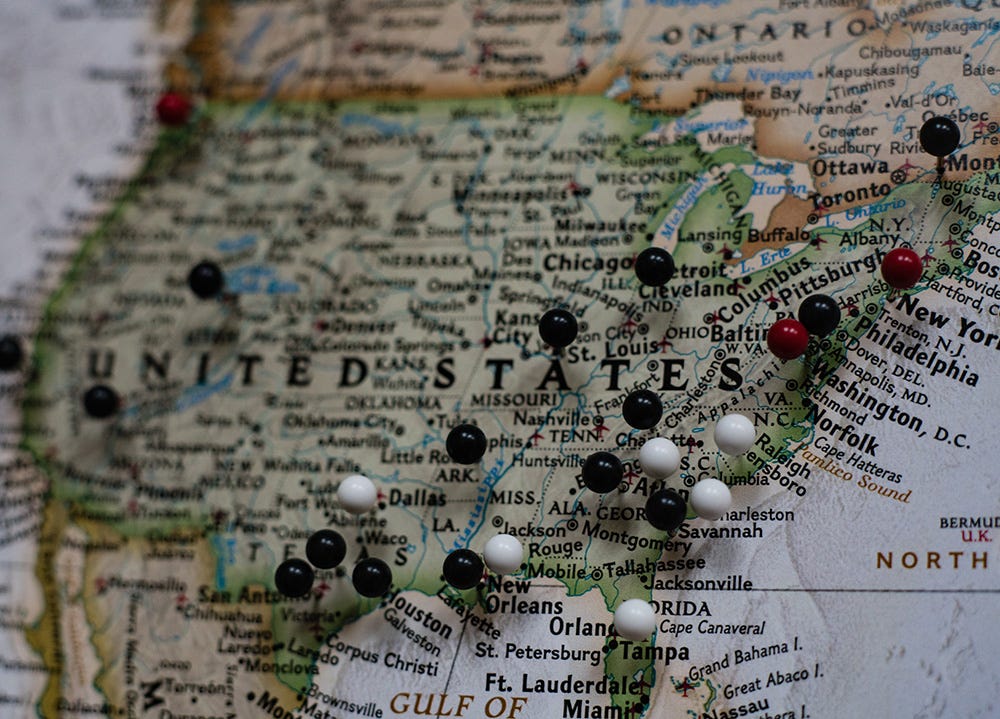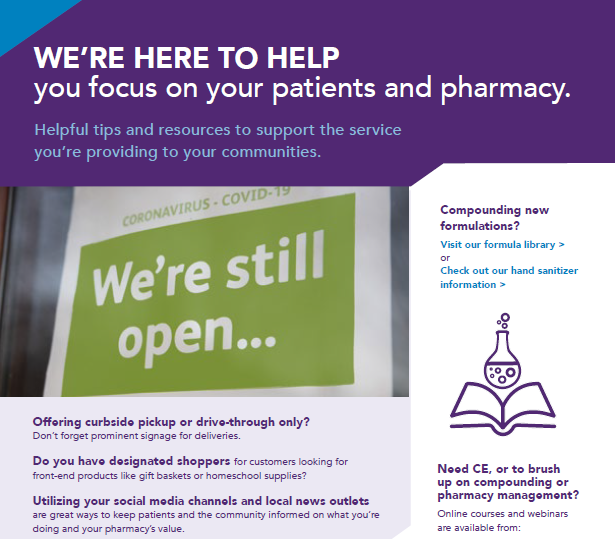Microwaves are for warming your lunch, not chemicals
With winter in full force, pharmacies in cold northern climates may see items “freeze” when shipped.
The chemicals listed below freeze close to room temperature, and the liquid can crystalize during shipment. However, they are fine to use once they return to room temperature. The best method to warm these chemicals for use is outlined below.
As a reminder, do not under any circumstance try to speed up the heating process by microwaving a frozen liquid chemical. This can generate hazardous fumes or vapors when certain chemicals are heated to an excess temperature. Save the microwave for lunch!
How to warm frozen items
- Loosen the lid on the bottle/container so the chemical is able to vent.
- Place the original container in a sealed bag (zip-lock type) – the bag needs to be big enough to completely enclose the chemical container.
- Place the sealed bag in a warm water bath (35 to 40°C) until the chemical returns to a normal liquid state.
Here are some items you may order for your pharmacy that have a low freezing point and may freeze/congeal during normal shipping in winter months:
- Acetic Acid, Glacial, USP
- Almond Oil, Sweet, NF
- Cottonseed Oil, NF
- Dimethyl Sulfoxide, USP
- Ethyl Oleate, NF
- Ferric Subsulfate, USP
- Isopropyl Palmitate, NF
- Lecithin Organogel
- Phenol Liquefied, USP
- Sesame Oil, NF
- Vitamin A Palmitate in Corn Oil
- Vitamin D3 in Corn Oil
- Vitamin E Acetate, Liquid, USP
Don’t forget that physical chemistry and safety information can be found on the Safety Data Sheet for each of these chemicals, available at each of the product links above. If you need a Certificate of Analysis, these are available by lot for APIs, select excipients, and other chemicals – you can search by lot number here, or contact our team at 800.239.5288.
Latest Articles
-
Posted: April 21, 2020Categories: Industry NewsRead more »
Covid-19 has led to a constantly changing regulatory environment to support patient care. But pharmacists need to take care to monitor national as well as state laws and guidelines.
-
Posted: April 17, 2020Categories: Compounding EducationRead more »
Download our one-page flyer with tips and resources to help support the service your pharmacy and staff are providing to your communities.
-
Posted: July 08, 2020Categories: Industry NewsRead more »
The Alliance for Pharmacy Compounding held their Advocacy Town Hall, which you can watch in its entirety...
-
Posted: June 25, 2020Categories: Industry NewsRead more »
A recent clinical trial from the UK showed decreased mortality for patients seriously ill with COVID-19 requiring oxygen or ventilators when treatment included the corticosteroid dexamethasone...
-
Posted: June 05, 2020Categories: Industry NewsRead more »
This week, two major medical journals retracted separate studies on Covid-19 treatments due to an inability to validate the data and methodology used in the studies.
-
Posted: May 29, 2020Categories: Compounding EducationRead more »
The Institute for Safe Medication Practices (ISMP) recently shared a medication error involving remdesivir vial labels that provides an important example for compounders...
-
Posted: May 14, 2020Categories: Compounding EducationRead more »
Change control SOPs are critical in sterile compounding - and pharmacy technicians are not the only ones who need to understand machines and tools in the lab and workflows.
-
Posted: May 11, 2020Categories: Compounding EducationRead more »
Formulations require different sample amounts to allow for an accurate result representative of the compounded preparation.
-
Posted: April 21, 2020Categories: Industry NewsRead more »
Covid-19 has led to a constantly changing regulatory environment to support patient care. But pharmacists need to take care to monitor national as well as state laws and guidelines.
-
Posted: April 17, 2020Categories: Compounding EducationRead more »
Download our one-page flyer with tips and resources to help support the service your pharmacy and staff are providing to your communities.
-
Posted: July 08, 2020Categories: Industry NewsRead more »
The Alliance for Pharmacy Compounding held their Advocacy Town Hall, which you can watch in its entirety...
-
Posted: June 25, 2020Categories: Industry NewsRead more »
A recent clinical trial from the UK showed decreased mortality for patients seriously ill with COVID-19 requiring oxygen or ventilators when treatment included the corticosteroid dexamethasone...
-
Posted: June 05, 2020Categories: Industry NewsRead more »
This week, two major medical journals retracted separate studies on Covid-19 treatments due to an inability to validate the data and methodology used in the studies.
-
Posted: May 29, 2020Categories: Compounding EducationRead more »
The Institute for Safe Medication Practices (ISMP) recently shared a medication error involving remdesivir vial labels that provides an important example for compounders...
-
Posted: May 14, 2020Categories: Compounding EducationRead more »
Change control SOPs are critical in sterile compounding - and pharmacy technicians are not the only ones who need to understand machines and tools in the lab and workflows.
-
Posted: May 11, 2020Categories: Compounding EducationRead more »
Formulations require different sample amounts to allow for an accurate result representative of the compounded preparation.
-
Posted: April 21, 2020Categories: Industry NewsRead more »
Covid-19 has led to a constantly changing regulatory environment to support patient care. But pharmacists need to take care to monitor national as well as state laws and guidelines.
-
Posted: April 17, 2020Categories: Compounding EducationRead more »
Download our one-page flyer with tips and resources to help support the service your pharmacy and staff are providing to your communities.









